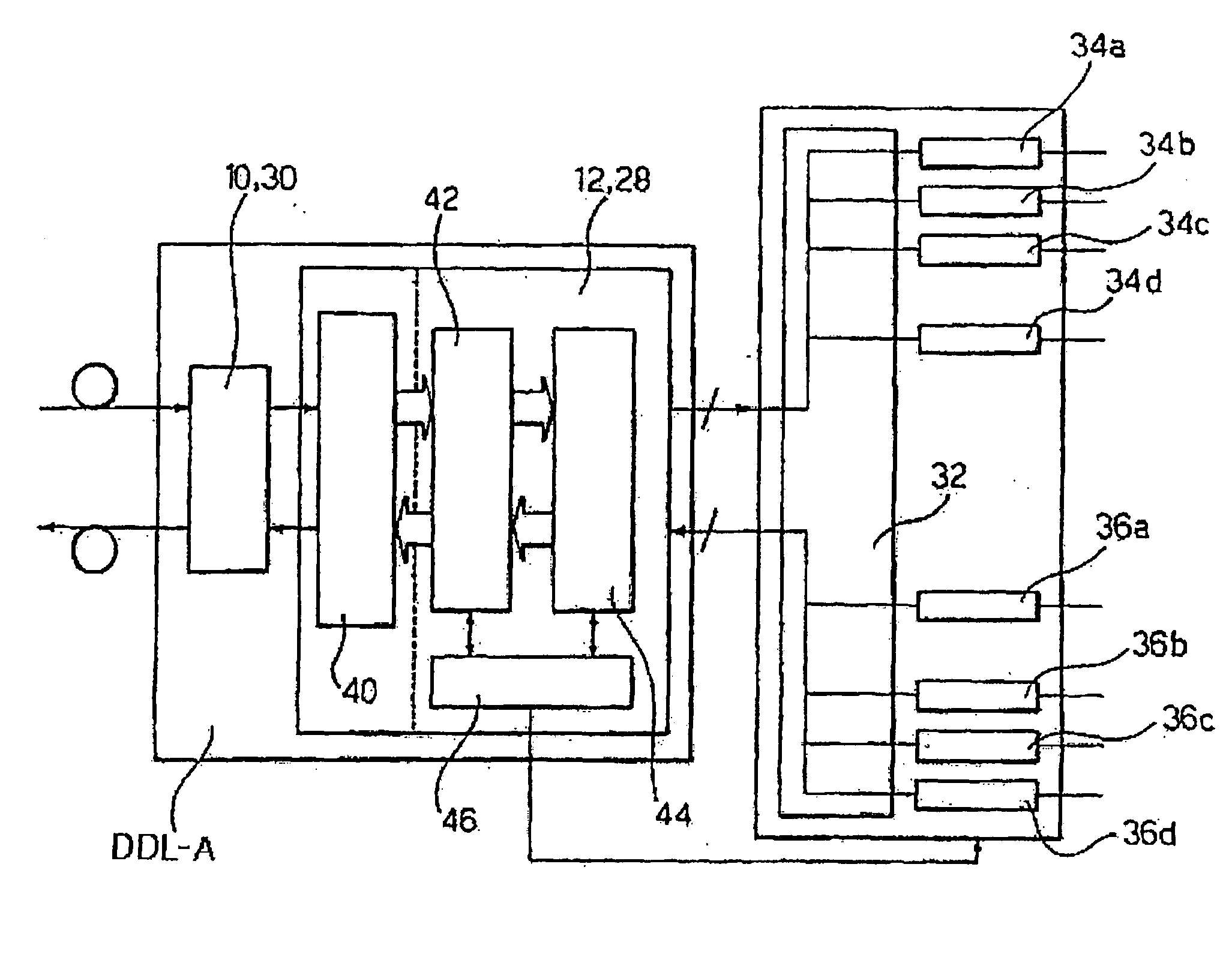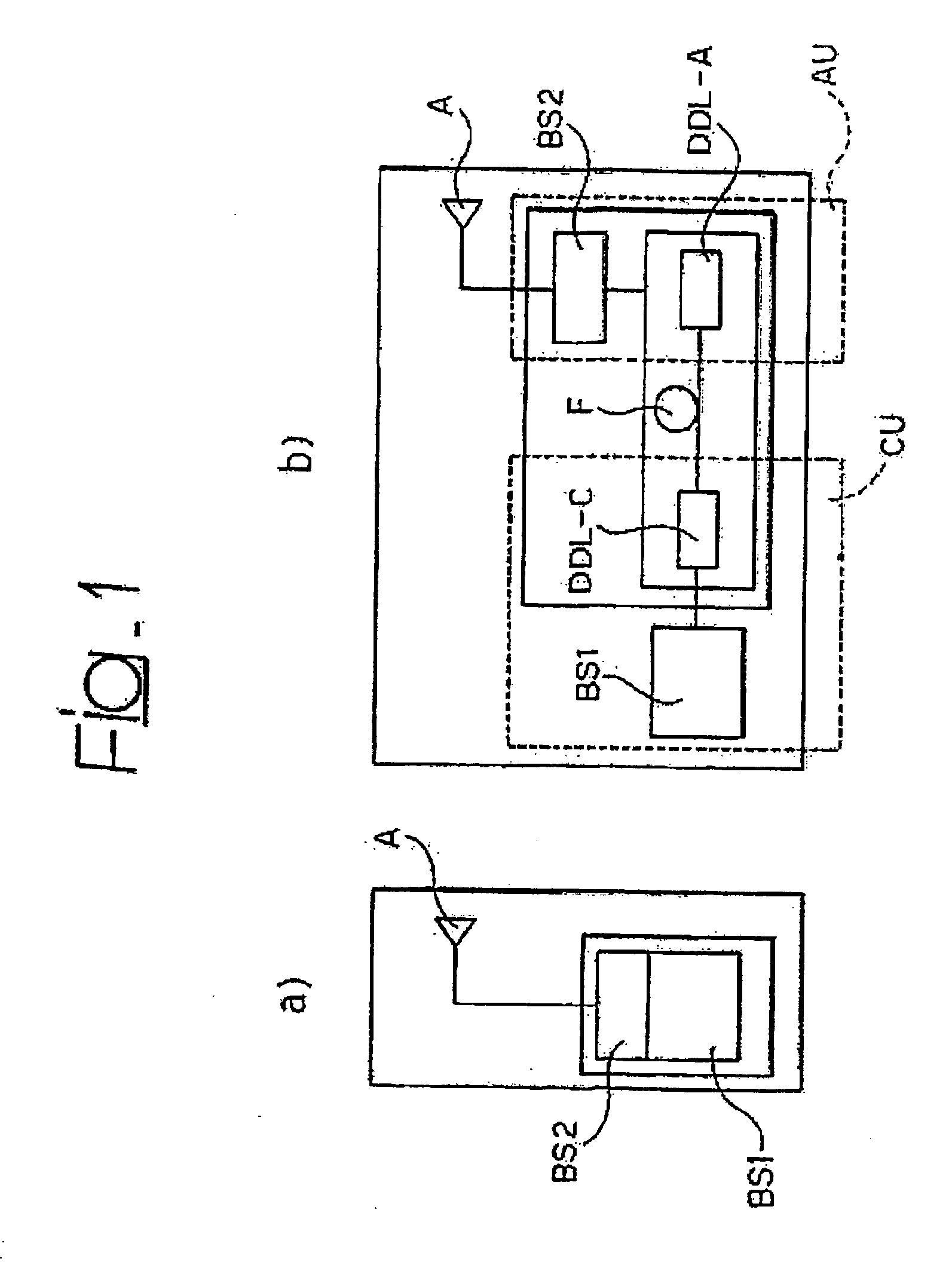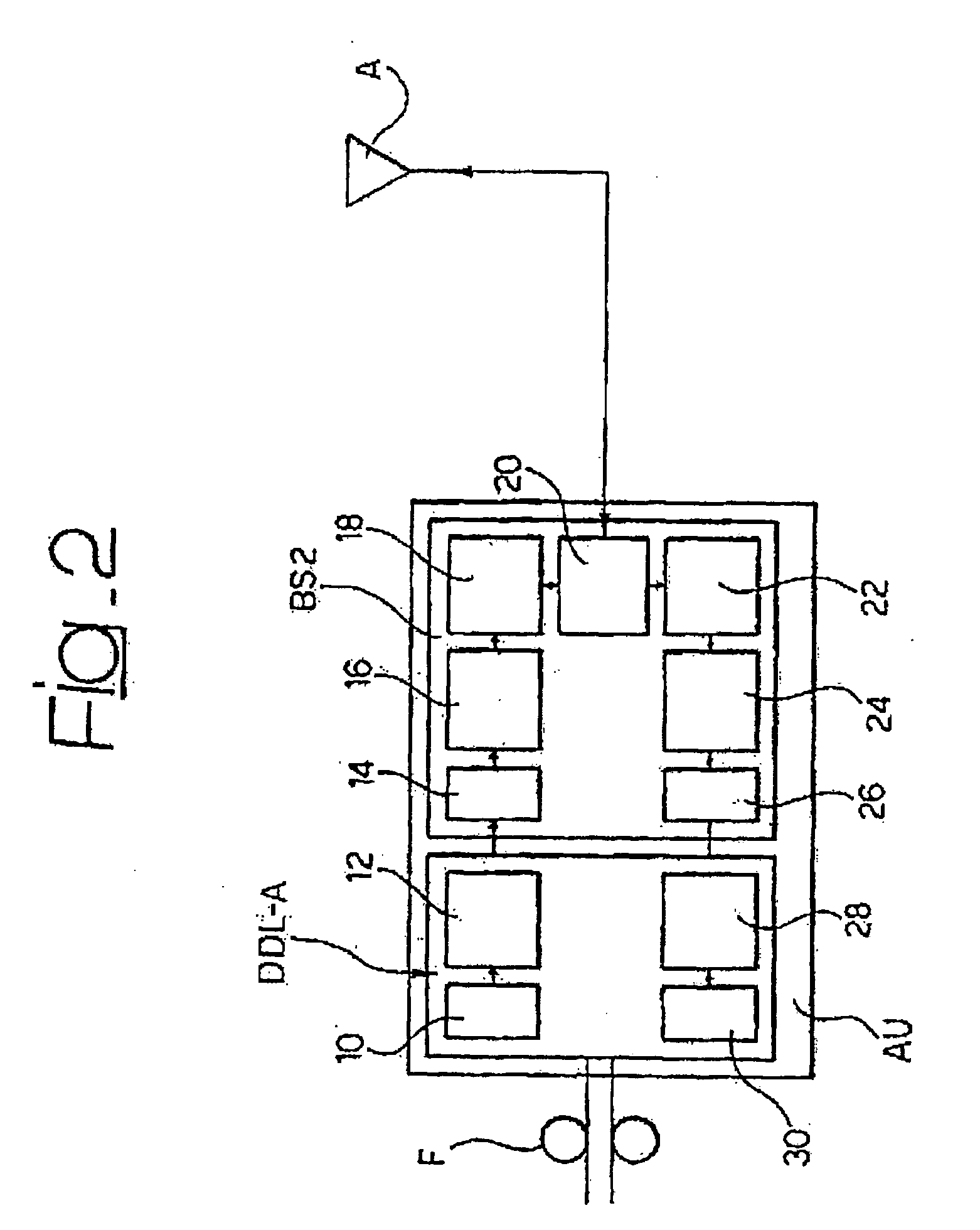Antenna system and method for configuring a radiating pattern
- Summary
- Abstract
- Description
- Claims
- Application Information
AI Technical Summary
Benefits of technology
Problems solved by technology
Method used
Image
Examples
Embodiment Construction
[0038] The detailed description that follows uses as reference general principles of antenna array theory, as presented, for example, in the reference text: [0039] Y. T. Lo, S. W. Lee, Ed., “Antenna handbook—Theory, applications and design”, Van Nostrand Reinhold, New York 1988 (in particular in Chapters 11, 13, 14, 18, 19), and in the literature available to those versed in the art of constructing such antennas.
[0040] Well known synthesis techniques such as, for instance, the techniques known as Dolph-Chebyshev, Taylor, Woodward-Lawson methods can be used to design such antennas. These well known techniques shall not be the subject of a detailed description herein.
[0041] For the purposes of the present description, it will suffice to recall that a configurable remotely controlled antenna is, for example, an antenna in which the setting of the power supply coefficients or weights, applied to each radiating element, is varied operating remotely; in this case this is a concept that ...
PUM
 Login to View More
Login to View More Abstract
Description
Claims
Application Information
 Login to View More
Login to View More - R&D
- Intellectual Property
- Life Sciences
- Materials
- Tech Scout
- Unparalleled Data Quality
- Higher Quality Content
- 60% Fewer Hallucinations
Browse by: Latest US Patents, China's latest patents, Technical Efficacy Thesaurus, Application Domain, Technology Topic, Popular Technical Reports.
© 2025 PatSnap. All rights reserved.Legal|Privacy policy|Modern Slavery Act Transparency Statement|Sitemap|About US| Contact US: help@patsnap.com



